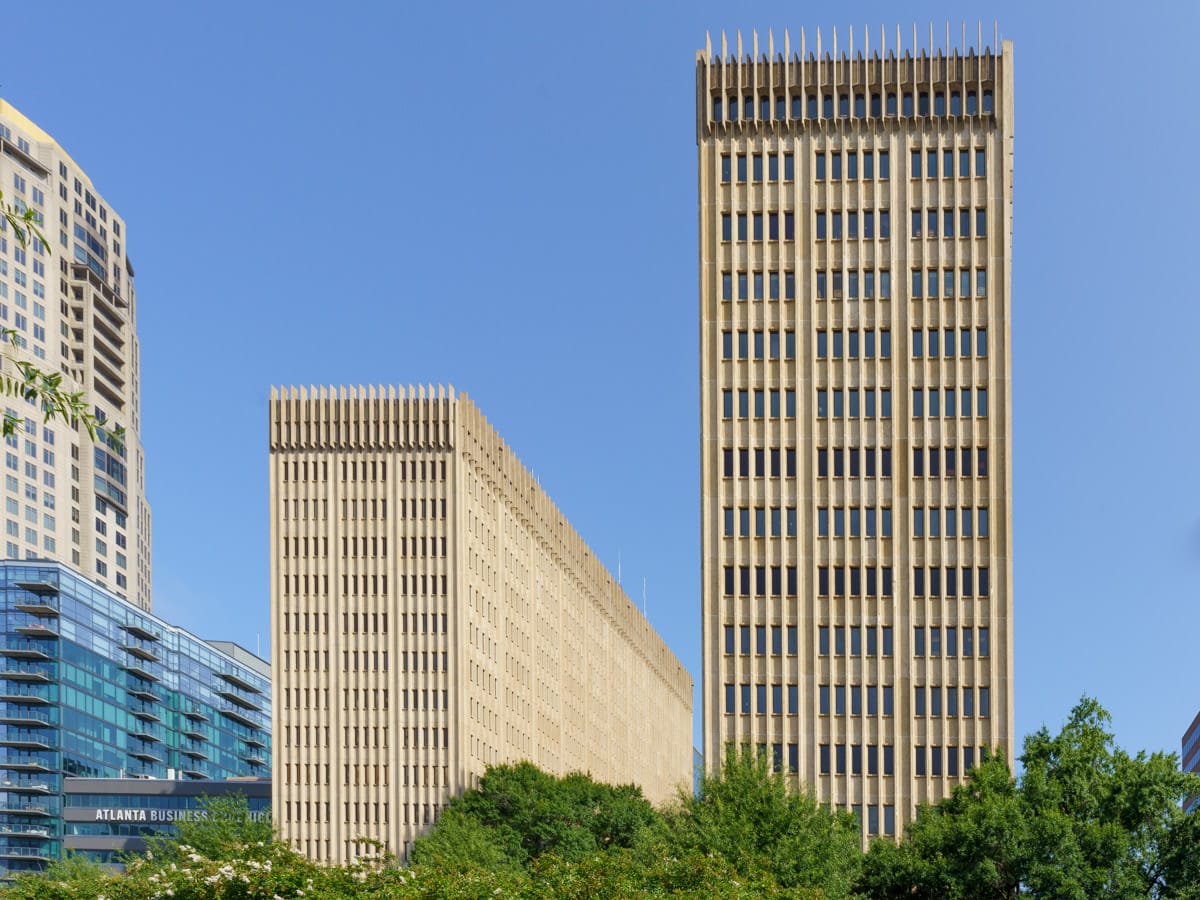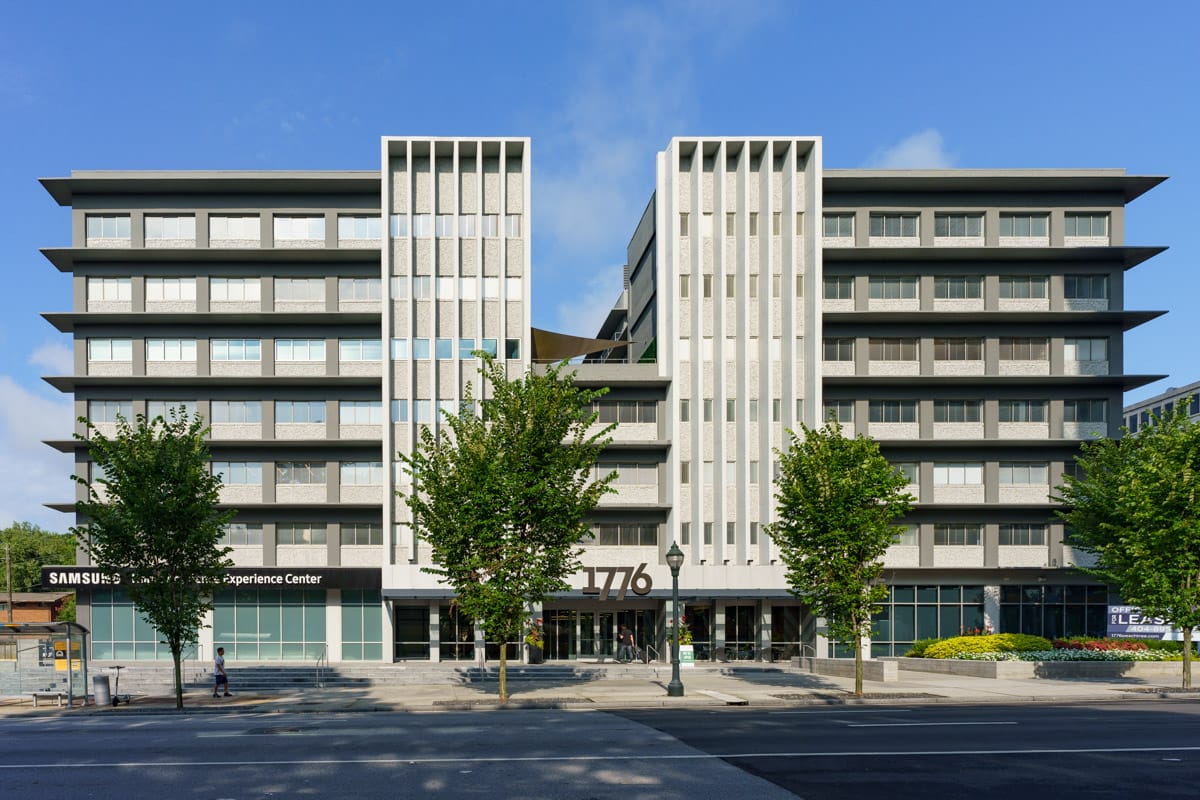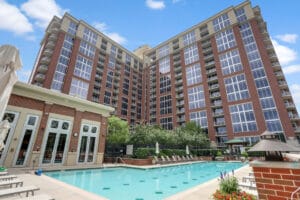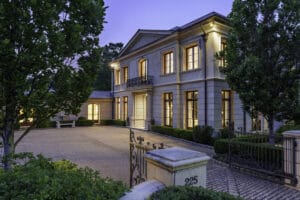Modernism has been an integral part of the Atlanta’s architecture since the 1950’s. Buildings like John Portman’s Hyatt Regency Hotel and Peachtree Plaza Hotel defined the downtown skyline for years. As Buckhead expanded high-rises like 3344 Peachtree have continued to add a modern feel to the urban landscape and have left many fine examples of mid-century modern architecture in their shadows.
To find the best examples of mid-century modern architecture in Buckhead, we turned to an undisputed expert: Charles Lawrence is an architectural conservator and preservation planner with renowned architecture firm Lord Aeck Sargent. He is a past president of the Georgia chapter of DOCOMOMO and currently serves on the Board of Directors of Historic Atlanta. We asked Charles to pick his top 5 modernist buildings in Buckhead and he uncovered some gems!
The examples Charles picked may not be what you would expect. In fact, you may have driven by these buildings a hundred times and not given them a second glance. They are each important for different reasons, and many are early examples of styles and techniques we now take for granted.
2015 Peachtree


This building embodies a unique architectural expression from the little-known, but prolific Atlanta architectural firm Cooper, Barrett, Skinner, Woodbury, and Cooper. In the mid-1950s, the firm produced a small body of work that includes the Masonic Center, just down the road, and Sparks Hall on the GSU campus. 2015 Peachtree and its contemporaries represent a brief reclamation of Art Deco motifs to an otherwise increasingly austere Modern Movement.
Plaza Towers
Ted Levy designed the Plaza Towers in the mid-1960s. At the time, there were no high-rises on this section of Peachtree Road and there were only a few high rises in all of Atlanta. From a distance, some dislike Levy’s use of concrete and stark geometry for the Plaza Towers and neighboring Park Place. Up close, though, the rich texture of the pebble-finished precast concrete and the flexibility of the wide-spanning concrete frame, are immediate delights. The material textures and bright, airy interiors have nurtured a culture of design among the residents.
Lenox Towers


When the first tower went up in 1961, it was the first skyscraper to be built outside of downtown. The architects, Stevens and Wilkinson, used interconnecting, exterior pre-cast panels in their design and potentially influenced Portman’s design of Peachtree Center a few years later. Lenox Towers are part of the larger Lenox Square planned development, which created a modern urban commercial hub that has had a profound impact on the direction and intensity of Buckhead’s growth.
1776 Peachtree


When the buildings were completed in 1962, they juxtaposed strong horizontal and vertical elements with rich textures and materials. Rough, pebble-face precast spandrel panels adjacent to polished aluminum; projecting concrete canopies alongside a monumental patterned screen wall. Unfortunately, the building lost some of its best Mid-Century Modern features, including a zig-zag canopy roof, the aluminum spandrel panels, cut-stone veneer bases, and the multi-story screen that spanned between the two towers. The buildings still retain their bold lines and perhaps one day could be restored to the MCM glory.
Canterbury Court
This purpose-built senior care facility has expanded quite a bit, but the success of the design is evident in its continued use. Completed in 1965 and designed by Stevens and Wilkinson (likely with Henri Jova as associate), the design embraces symmetry and austerity without being overly rigid. Ample, large plate glass windows provide views and light to units and a variety of community and amenity spaces. In a sense, it predates Colony Square as the south’s first live, work, play development.








